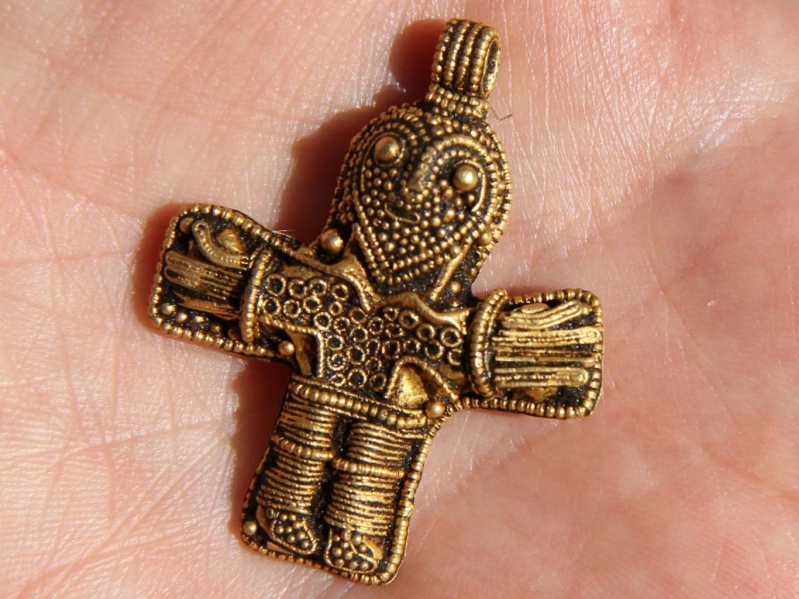
A tiny crucifix pendant bearing the image of Jesus believed to be about 1,100 years old may change history according to experts, who say the cross predates the time Christianity was thought to have become widespread in Denmark.
According to a report from the Local, an amateur Danish archaeologist named Dennis Fabricius Holm discovered the artifact as he walked around a field near the town of Anslev, Østfyn, with his metal detector. The golden, well-preserved stone bears a figure of Jesus on the front side, while the reverse is smooth. At the top a small eye for a chain is mounted.
"I got off early on Friday, so I took just a few hours, I went around with my metal detector and then I came suddenly on something. Ever since I turned over the clump of earth and saw the cross, I've been unable to think of anything else," Holm reportedly said.
He added, "It has been very overwhelming. I have not yet grasped that find's influence on Denmark's history. It is hard to comprehend."
The International Business Times notes that before the latest find, the Jelling Stone - a large stone with a representation of Jesus on the cross - was the oldest known Christian artifact in Denmark, dating back to 965. In turn, the latest discovery is thought to date back at least a decade and a half earlier, to the first half of the 10th century.
"In recent years there has been more and more signs that Christianity was widespread earlier than previously thought - and here the clearest evidence so far," Malene Refshauge Beck, curator and archaeologist at Østfyn's museum said, the Independent reported. "It is an absolutely sensational discovery that is from the first half of the 900s [10th century]."
For centuries, Christian missionaries sought to convert the Danes, but the Vikings are thought to have resisted their attempts, notes the IBTimes. Under pressure from Christian trade partners, particularly from Germany, most Danes adopted Christianity by 1050, the end of the Viking era. Thus, experts believe the tiny cross was likely worn by a Viking woman.
"The figure can therefore help to advance the time when one considers that the Danes really were Christians," Beck said. "This is a subject that certainly will have to appear in the history books in the future."
The Independent notes that impact of the find is such that the historical record of the country will need to be re-written: "The figure can therefore help to advance the time when one considers that the Danes really were Christians," said Ms Beck.
She added, "Simply because one can say that the person who carried it here no doubt embraced the Christian faith...This is a subject that certainly will have to appear in the history books in the future."
The Anslev cross will be on exhibit at the Viking Museum in Ladby until the Easter holiday, then it will sent to a lab for preservation. In the summer it will be part of an exhibition in the museum that will show some recent Viking Age finds made in eastern Funen with metal detectors.







